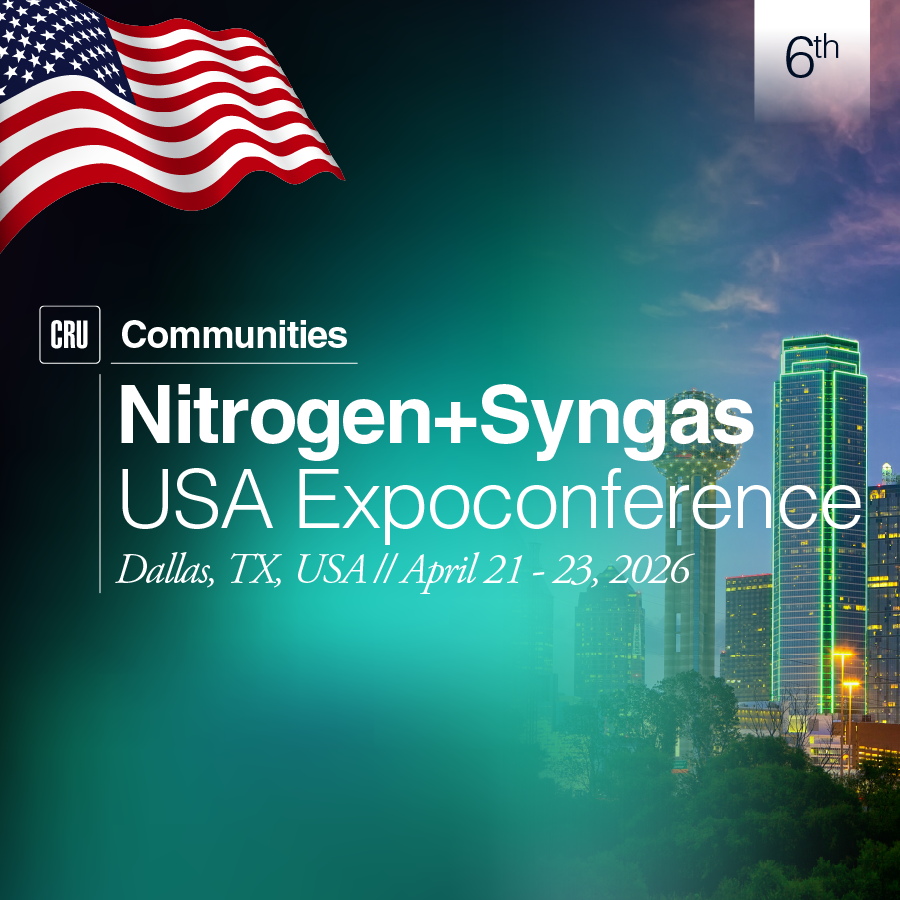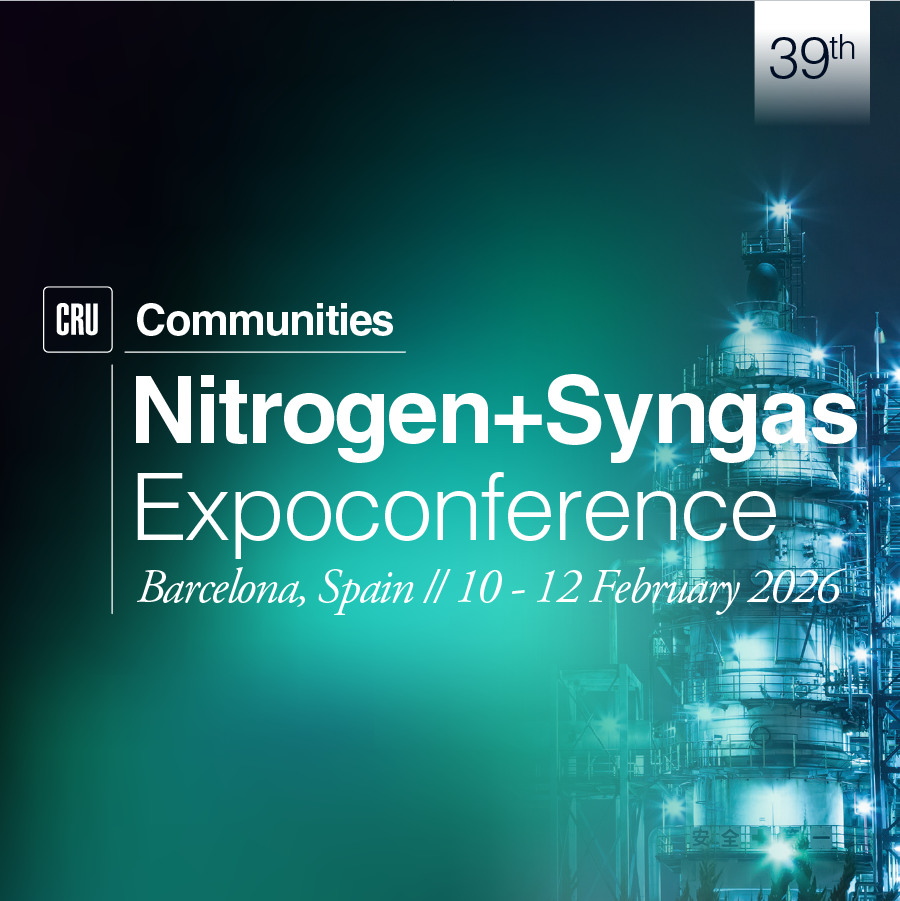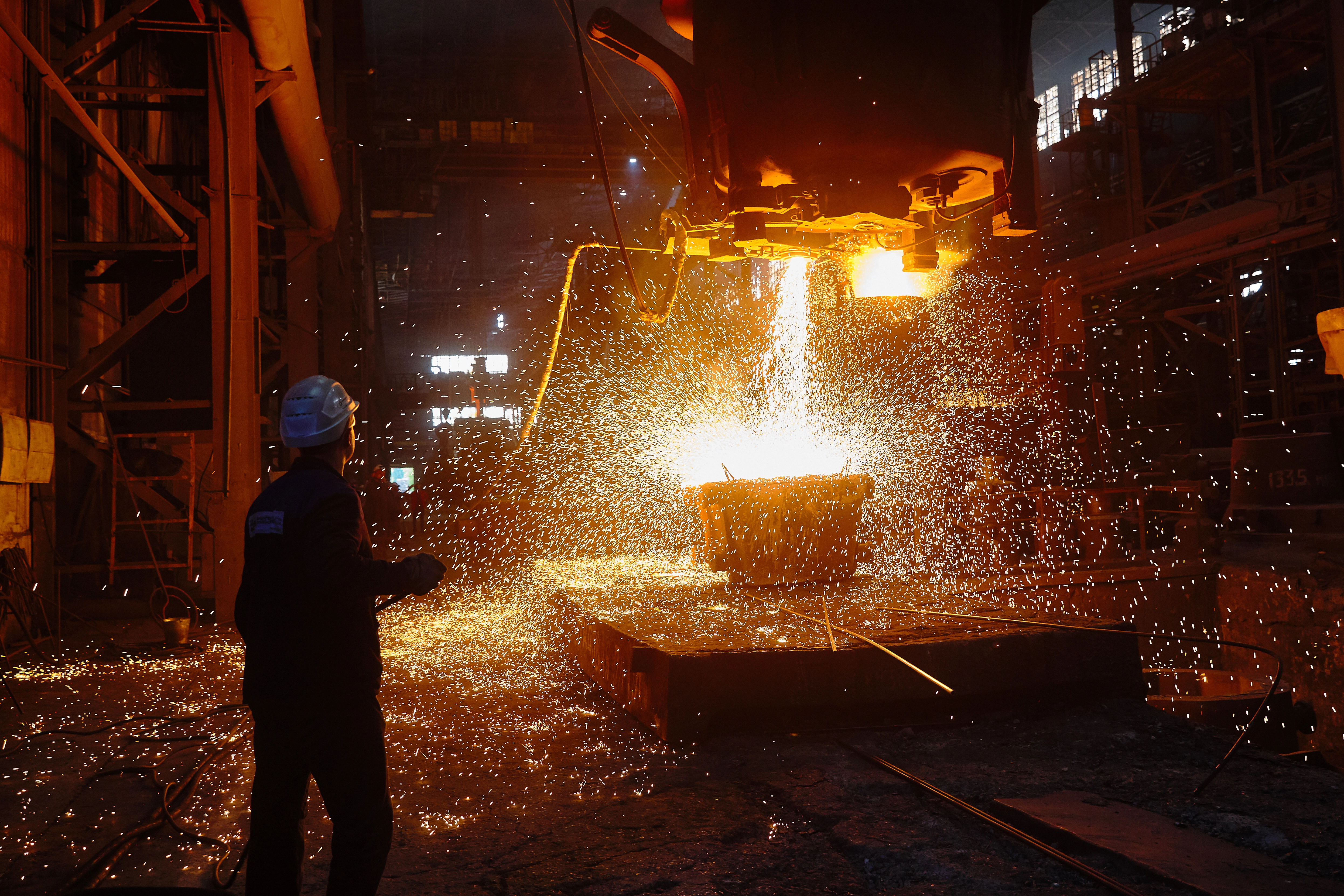Blue ammonia is set to become more cost effective than traditional “grey” ammonia in key regions within the next four years as government policy increases carbon costs for companies, CRU analysis suggests.
Still, although such policies will also lead to steep falls in green ammonia costs, green ammonia is likely to remain uncompetitive on a cost basis over the coming three decades.
The analysis was published in the latest edition of CRU’s Low-emissions Ammonia market outlook, which considers costs in the sector.
Support for blue ammonia from policy changes, particularly in the US and EU, is forecast to rapidly improve the commercial viability of blue ammonia production.
Legislation such as the Inflation Reduction Act (IRA) in the US provides a boost to the blue ammonia sector by incentivising carbon capture and clean hydrogen production.
CRU estimates that carbon capture and storage will increase grey ammonia costs by between $20/t NH3 and $44/t NH3, depending on size and storage availability. Under IRA subsidies, blue ammonia producers in the US will already be able to cover the additional costs of production. Current EU ETS prices are forecast to make blue ammonia cheaper than grey ammonia there by 2026, but there are still barriers to adoption, including the availability of cost-effective storage. Much work will need to be done and companies will have to be fully exposed to carbon taxation to be incentivised to swap over. Geological formations that enable easy storage of CO2 will also be necessary.
For green ammonia, production costs are forecast to fall by an average 57% between 2020 and 2050 to $419/t NH3, driven by declines in renewable energy costs and lower capital costs.
China, India and Brazil are currently the lowest-cost green ammonia producers, based on 2020 input and capital data. China is expected to maintain pole position in 2050, followed by the US and EU, due to access to lower-cost renewable power.
Notably, CRU estimates that green hydrogen in the US with the IRA subsidy would be cheaper than grey hydrogen, with no carbon tax, by 2038.
Meanwhile, Saudi Arabia, Australia and Morocco – countries where there has been a lot of interest in and announcements of green ammonia projects – are at the upper end of the cost curve now and in the future. This is due to higher capital costs and, in the case of Australia, lower load factors.
A range of companies have touted green ammonia as a key pillar for energy diversification in the Middle East, but capital costs around $200,000/MW higher than USA mean the region is less competitive than other key locations. The landmark 1.2 Mt/year NEOM city green ammonia project in Saudi Arabia looking to serve the marine fuel market is the largest project to receive FID status in the region. While Oman has more project capacity at 11.5 Mt, most of this is still pre-FEED stage.
The hype around the green ammonia industry, and the number of announcements through the past two years, has been phenomenal. But the gap between hype and reality is enormous, as already pointed out by CRU.
This cost analysis further shows that, if green ammonia is to become competitive, stakeholders need to find ways to cut costs even more than currently expected. Alternatively, or in addition, carbon costs need to rise even more than current projections and targets.
More detailed analysis of the sector can be found in CRU’s Low Emissions Ammonia Market Outlook. Our nitrogen market outlooks, production cost and emissions analysis services help our clients to benchmark, quantify and strategize. They do this using the robust and transparent data we provide alongside unrivalled independent insight. Get in touch with us to find the solution of services that best serve your needs.
















